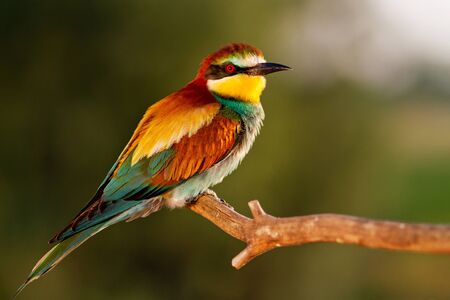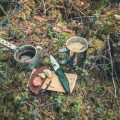Introduction to Hebrides Wildlife
For those with a passion for the great outdoors, the Hebrides present a spectacular haven teeming with wildlife you’d be hard-pressed to find elsewhere in Britain. This cluster of rugged islands off Scotland’s west coast is famed for its wild beauty, unspoilt landscapes, and an extraordinary range of rare birds and elusive creatures. Whether you’re an avid birdwatcher or simply enjoy the thrill of spotting something special on your camping trip, the Hebrides deliver an experience steeped in authentic British nature. From dramatic cliffs echoing with seabird colonies to remote moorlands roamed by red deer, these islands set the perfect scene for an immersive adventure where every day brings a fresh encounter with the wild side of the UK.
2. Essential Gear for Bird and Wildlife Spotting
If you’re planning to explore the wilds of the Hebrides and hope to spot rare birds or elusive creatures, packing the right kit is absolutely vital. The weather here can be anything from glorious sunshine to driving rain – often in the same afternoon – so preparation is key. Here’s a hands-on guide to essential gear that will keep you comfortable, dry, and ready for every wildlife encounter.
Binoculars: Your Window to Hebridean Wildlife
A good pair of binoculars is non-negotiable for birdwatching in the Hebrides. Opt for something lightweight yet robust, as you’ll likely be hiking over rough ground. Waterproof and fog-proof models are best, given the UK’s famously unpredictable climate. Look for specs around 8×42 – this gives excellent magnification without sacrificing brightness or field of view.
| Feature | Recommendation |
|---|---|
| Magnification | 8×42 |
| Weight | Under 700g |
| Waterproof/Fog-proof | Essential for UK conditions |
| Price Range | £100–£300 for reliable quality |
Field Guides: Know What You’re Spotting
Pocket-sized field guides are invaluable when you want to identify a fleeting glimpse of a Corncrake or distinguish an otter from a seal at distance. Choose guides specific to British wildlife, preferably with clear illustrations and local distribution maps. Many campers also like to use UK wildlife apps on their phones, but don’t rely solely on tech – mobile signal can be patchy out here.
Top Picks:
- RSPB Pocket Guide to British Birds
- The Collins Complete Guide to British Mammals
- BTO Bird ID App (for offline access)
Waterproofs and Clothing: Prepare for Anything
The Hebridean weather is famous for changing on a sixpence, so proper waterproofs are crucial. A breathable waterproof jacket, overtrousers, and sturdy walking boots are must-haves. Layering is your friend; pack thermal base layers and quick-drying tops. Don’t forget a hat and gloves – even in summer, winds off the Atlantic can nip!
| Clothing Item | Why It Matters in the Hebrides | Recommended Features |
|---|---|---|
| Waterproof Jacket | Keeps you dry in sudden downpours | Taped seams, adjustable hood, breathable fabric (e.g., Gore-Tex) |
| Walking Boots | Handles boggy moorland & rocky paths | Waterproof membrane, good ankle support, grippy soles (Vibram recommended) |
| Thermal Base Layer | Adds warmth during chilly mornings/evenings | Merino wool or synthetic wicking fabric |
| Packed Hat & Gloves | Cuts wind chill on exposed coasts & hillsides | Windproof, water-resistant materials preferred |
A Practical Tip from the Field:
Keep your binoculars and field guides in a dry bag or waterproof pouch when not in use – spray from the sea or a sharp shower can catch you out in seconds. With these essentials sorted, you’ll be well equipped to make the most of every magical moment the Hebridean wildlife has to offer.

3. Top Wildlife Hotspots to Explore
If you’re heading to the Hebrides with your binoculars and camera at the ready, knowing where to go is half the adventure. The islands are sprinkled with pockets of untamed wilderness, each offering its own unique opportunities for spotting rare birds and elusive creatures. Here’s a breakdown of must-visit wildlife hotspots, along with practical tips to help you reach these local treasures.
Isle of Mull: Birdwatcher’s Paradise
The Isle of Mull is famed for its population of white-tailed sea eagles—the UK’s largest bird of prey. Head to Loch na Keal or the rugged cliffs near Carsaig for your best chance of seeing these magnificent birds in flight. Don’t miss out on a boat trip from Tobermory, where you might spot dolphins, porpoises, and even basking sharks.
Getting There:
Catching a CalMac ferry from Oban is the most straightforward route; book in advance during peak season. Public transport is limited, so consider hiring a car or joining a guided wildlife tour for maximum flexibility.
RSPB Balranald Nature Reserve, North Uist
This coastal reserve is a haven for corncrakes—one of Britain’s rarest birds—alongside lapwings and machair wildflowers. Early mornings or dusk are prime times for sightings, especially in late spring and summer when the corncrake’s distinctive call fills the air.
Getting There:
Accessible by road from Lochmaddy ferry terminal; cycling is a popular option thanks to quiet island roads. Facilities include parking and marked walking trails.
The Shiant Isles: Puffin Spotting
For puffin enthusiasts, the Shiant Isles are an absolute treat between May and July. These remote islands host thousands of nesting seabirds, including razorbills and guillemots. While landing tours are weather dependent, boat trips from Stornoway offer breathtaking views and excellent photo opportunities.
Getting There:
Book a wildlife cruise well ahead of time—local operators fill up quickly during puffin season. Bring waterproofs and be prepared for changeable conditions out at sea.
The Callanish Stones & Lewis Moorlands
Apart from their Neolithic mystery, the moorlands around the Callanish Stones on Lewis are home to hen harriers, short-eared owls, and red deer. Quiet walks at dawn or dusk often yield the best wildlife encounters, particularly outside midsummer when tourist numbers drop off.
Getting There:
Easily accessible by car or bus from Stornoway; combine your wildlife walk with a visit to the ancient stones for a full day out.
Local Tip:
Packing lightweight waterproofs, sturdy boots, and insect repellent will keep you comfortable as you explore these wild corners of the Hebrides—and remember to respect local guidance by sticking to marked paths and keeping noise to a minimum near sensitive nesting sites.
4. Rare Birds and Creatures You Might Encounter
The Hebrides are a treasure trove for wildlife enthusiasts, boasting an impressive array of rare and iconic species that call these windswept isles home. From majestic raptors to mysterious marine giants, every camper has a chance to spot something truly unforgettable—if you know where (and how) to look.
Birdlife: From Sea Eagles to Corncrakes
Perhaps the most celebrated resident of the Hebrides is the white-tailed sea eagle. With its enormous wingspan and piercing eyes, it’s often spotted soaring above lochs or perched on rugged cliffs. Locals recall tales of seeing these giants snatch fish from the water with breath-taking precision—a real-life spectacle best witnessed early in the morning when the world is just waking up.
Another elusive gem is the corncrake. More often heard than seen, its rasping call echoes through the meadows during late spring and summer. Ask any islander, and theyll share stories of patient evenings spent listening for that tell-tale sound in hope of a fleeting glimpse between the reeds.
Marine Marvels: Basking Sharks and Beyond
The Hebridean waters are alive with marine life, and one of the most thrilling sights is the basking shark—the world’s second-largest fish. These gentle giants glide close to shore during warmer months, their dorsal fins slicing through the waves. I’ll never forget my first sighting off Coll: a hush fell over our boat as a shadowy shape drifted past beneath us, leaving us awestruck at nature’s scale.
Spotting Guide: Iconic Wildlife of the Hebrides
| Species | Where to Spot | Best Time |
|---|---|---|
| White-tailed Sea Eagle | Mull, Skye, Outer Isles | Year-round (best in spring) |
| Corncrake | Machair grasslands (Uist, Tiree) | Late April – August |
| Basking Shark | Coastal waters off Coll & Tiree | May – September |
Local Lore & Real-Life Encounters
The Hebrides have no shortage of wildlife legends passed down through generations. Some tell of otters—known locally as dratsies—playing among kelp beds at dawn, while others speak of lucky campers who stumbled upon red deer stags silhouetted against misty moorland sunrises. Whether you’re guided by local knowledge or simple serendipity, every encounter feels like being let in on one of Scotland’s best-kept secrets.
5. Responsible Wildlife Watching for Campers
When camping in the Hebrides, it’s essential to balance your excitement for spotting rare birds and creatures with a deep respect for their habitats. The Scottish Outdoor Access Code provides clear guidelines to help you enjoy nature responsibly and ensure that the stunning landscapes and wildlife remain unspoilt for future visitors.
Respect Natural Habitats
Always stick to established paths and avoid trampling on sensitive areas such as nesting sites, dunes, or peat bogs. Many of the Hebrides’ rarest species rely on undisturbed environments to thrive. Use binoculars or a camera with a zoom lens to observe animals at a safe distance—never attempt to approach or feed them.
Follow the Scottish Outdoor Access Code
The Code encourages you to take only memories and leave no trace. Pack out all rubbish, even biodegradable waste, and keep noise levels low to minimise disturbance. If you’re wild camping, pitch your tent well away from water sources and livestock fields, and move on after two or three nights.
Camp in Harmony with Nature
Choose existing campsites where possible and use a camping stove instead of lighting fires, which can damage delicate heathland. Be mindful during dawn and dusk—prime times for wildlife activity—and keep pets under close control at all times. If you spot rare birds like corncrakes or eagles, quietly enjoy the moment without drawing attention or lingering too long.
Conservation is everyone’s responsibility. By adopting these practical steps during your Hebrides adventure, you’ll help preserve the islands’ extraordinary biodiversity while experiencing the magic of Scotland’s wild places first-hand.
6. Local Insights: Chatting with Fellow Birders and Islanders
One of the true joys of wildlife spotting in the Hebrides is the chance to engage with local communities and fellow enthusiasts. The islands are home not just to rare birds and elusive creatures, but also to a passionate network of birders and islanders who know the land inside out. While you’re camping, don’t hesitate to strike up a conversation at a village café, campsite, or even while waiting for the ferry – you’ll often find locals eager to share their favourite wildlife haunts or tips on recent sightings.
Joining local birding groups or attending informal gatherings can be an excellent way to get the lay of the land. Many seasoned Hebridean campers recommend checking community notice boards for meet-ups or guided walks led by knowledgeable residents. These experiences often provide insights that no guidebook can match, such as which loch currently hosts a visiting sea eagle or which machair is bustling with corncrakes this season.
Don’t overlook the value of swapping stories with other campers either. There’s a genuine camaraderie among those braving the wild weather and chasing after rare species. You might pick up practical advice about setting up your camp to avoid midges, or hear about a hidden glen where otters have been seen at dusk. Most importantly, these chats foster a sense of belonging and respect for both the wildlife and the local way of life.
Remember, Hebridean hospitality is legendary – people are generally warm and welcoming, especially if you show an interest in their island home. Approach conversations with curiosity and respect; asking before photographing or exploring private land is always appreciated. By actively engaging with locals and fellow nature lovers, you’ll enrich your trip with authentic experiences and perhaps uncover some wildlife secrets that turn an ordinary camping holiday into an unforgettable adventure.


